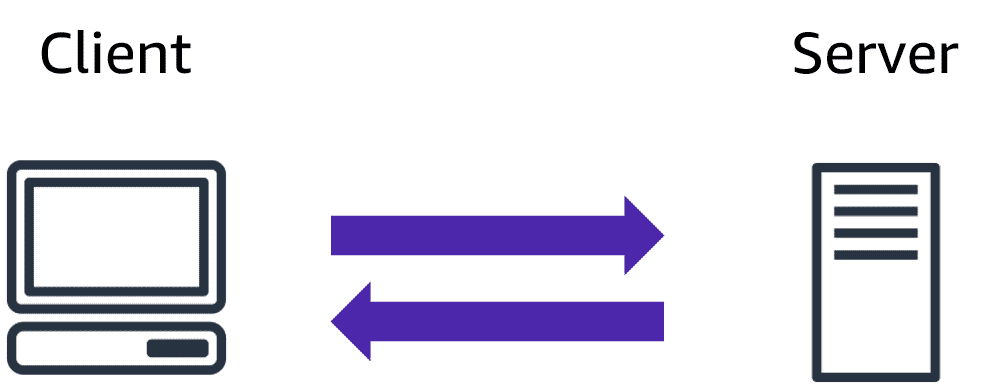AWS Cloud Computing
The Client-Server Model
The client-server model is an important concept in cloud computing.
It is about many clients using services from a centralized server.
What is the Client-Server Model?
The Client-Server model is about a client that interacts and makes requests to a computer server.
A client is the way that the person interact with the server.

Image created by Amazon Web Services
The server does tasks for the client and returns information.
What is Cloud Computing?
Cloud computing is a computing service made available over the internet.
Cloud computing is a pay-as-you-go model for delivering IT resources.
You pay only for what you use.
Deployment Models
There are three different kinds of deployment models:
- Cloud-based
- On-premises
- Hybrid
The models are different ways of accessing compute services - over the internet, locally, or in a combination.
Cloud-Based Deployment
Everything runs in the cloud.
This model allows you to build new applications or move existing ones to the cloud.
There are different levels of services ranging from low to high.
The level of service has different requirements on your management, architecting, and infrastructure.
For example, a company might create an application consisting of virtual servers, databases, and networking components entirely based in the cloud.
On-Premises Deployment
Deploy resources by using virtualization and resource management tools.
On-Premises Deployment is also known as private cloud deployment.
For example, you might have applications that run on technology that is fully kept in your on-premises data center.
Though this model is much like legacy IT infrastructure, its application management and virtualization technologies make it more effective.
Hybrid Deployment
In a hybrid deployment, you connect cloud resources to an on-premises infrastructure.
This approach is relevant in many situations.
For example, you are working with sensitive data or are under specific government regulations.
Why Choose Cloud Computing?
There are many reasons for going with the cloud.
Cloud computing enables benefits such as:
- Cost savings
- Security
- Scalability
- Flexibility
Payment Model
The cloud payment model is flexible.
You do not have to invest in a data center, servers, and other resources.
The cloud services is a variable expense.
You can use the services from the start and consume more as you grow.
Fewer Operations
Having your own data centers and servers requires resources and staffing.
Cloud computing reduces operation and lets you focus on important things, such as your applications and customers.
Flexible Capacity
Having and managing your own servers can result in unused capacity and limitations.
On the other hand, you can grow freely with cloud computing.
You pay for what you use
Economies at Scale
Cloud computing is about shared resources.
Sharing the infrastructure cost with hundreds of thousands of other customers lowers the overall costs.
Increased Speed
The flexibility of cloud computing makes it easier to develop and deploy applications.
You can test and utilize resources as you want in minutes.
This freedom allows you to experiment and invent more.
It allows for instant resource access.
Global Reach
AWS has data centers all over the world.
The AWS Cloud's global reach allows you to swiftly deploy apps to consumers anywhere.
Customers can access your apps quickly.
You can pick the ones near your clients to reduce the latency.